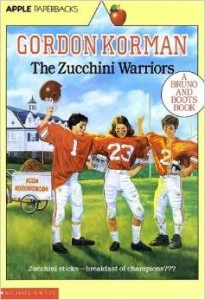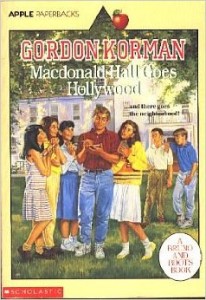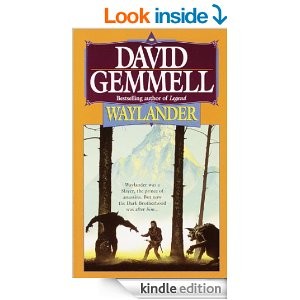When you’re a self-employed, work-from-home individual, establishing and maintaining professional discipline is crucial to being productive. When you can stay up as late as you want, sleep in to your heart’s content, eat at your leisure, take naps whenever you’re even the least bit tired, and choose to watch TV in place of work with nobody looking over your shoulder… well, it doesn’t take long before you’re living in complete squalor/chaos.
At some point, you have to get up and make the bed, put down the remote, and plunk yourself down in your office chair. In short, you have to force yourself to get shit done. There are all kinds of strategies to do this, and you’ll be hearing much about that subject this month. Back in January, we started the conversation about setting goals for the year. Well, guess what? Here we are, nearly at the midway point, and it’s time to check in and see how we’re doing.
But today’s post isn’t about progress bars and project checklists. I’m not here to espouse productivity tips. I’m here to talk about something quite a bit more personal.
Where to start? How about this: I’m a big guy. Well, maybe I’m being a bit too delicate. I’m fat. There, I said it. It’s true. I’m not proud of this. (I’m also not particularly ashamed, but that’s another subject entirely.)
My point is this. It’s one thing to make myself sit down in my office chair for long stretches of the day to both take care of my professional commitments and write enough new words on a regular basis to keep afloat my burgeoning career as an author. It’s another thing to recognize that I also need to make myself get out of that chair for long enough periods of time to keep my productivity high and my health in check. Add to this a couple of medical problems that make substantial physical exercise difficult to maintain for long periods of time, and you see just how tough a balancing act it is to pull off.
Writing and editing are extremely sedentary activities. I was never exactly slim, but back when I was going to college and waiting tables, I didn’t have much trouble regulating my weight and overall physical well-being. My lifestyle was active enough that I simply didn’t have to worry about finding time to exercise. Now? Well, now I basically have no reason to leave my house for half of my workweek, and that’s a problem.
There was a time when I could embark on a 45-minute-walk every day, eat a few more salads, and get by. But then, about five years ago, this came to a sudden end when I began to suffer the effects of a still-undiagnosed medical condition which makes it difficult to impossible for me to bear any weight on my feet for days at a time on a completely random schedule. I’ve certainly found some truth in the old adage that when it comes to exercise, habit leads to ease; in other words, when you do something every day, the momentum of that schedule takes over, making it easier all the time to get off your butt. But when you come to a screeching halt every few weeks and basically don’t have the luxury of moving? Let’s just say it’s hard to stay motivated.
And yet it’s so important for people in our line of work to set realistic (and even ambitious) health goals. I won’t use this space to recommend any particular diet or exercise regimen, since everyone’s recipe for success is highly individual. I do, however, want to start the conversation. We all need to constantly strive for a healthy balance of work, exercise, and diet. Right now, my goal is to get in thirty minutes of moderate walking every day, except on days when walking is impossible—and I have a food plan that kicks up to a level of higher intensity during periods of low exertion to compensate for burning fewer than desired calories.
Let’s talk more about our health goals, and how we get around our sedentary tendencies. See you in the comments!

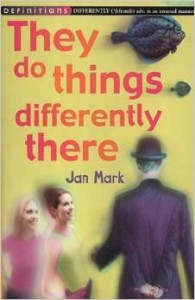 My family unearthed They Do Things Differently There (Jan Mark, 1994) at a library book sale when I was twelve years old. We had been consuming Jan Mark books for years and were very excited to discover a relatively new book of his shoved in amongst the clutter of salable discards. Every Jan Mark book I have read has endowed me with some new discovery of how to both play with the English language and appreciate life in general, but They Do Things Differently There was a crown jewel when I was young, and now, thirteen years later, I appreciate it all the more.
My family unearthed They Do Things Differently There (Jan Mark, 1994) at a library book sale when I was twelve years old. We had been consuming Jan Mark books for years and were very excited to discover a relatively new book of his shoved in amongst the clutter of salable discards. Every Jan Mark book I have read has endowed me with some new discovery of how to both play with the English language and appreciate life in general, but They Do Things Differently There was a crown jewel when I was young, and now, thirteen years later, I appreciate it all the more. Amy Groening is a publishing assistant at Word Alive Press. She is a passionate storyteller with experience in blogging, newspaper reportage, and creative writing. She holds an Honours degree in English Literature and is happy to be working in an industry where she can see other writers’ dreams come to life. She enjoys many creative pursuits, including sewing, sculpture, and painting, and spends an embarrassingly large amount of time at home taking photos of her cats committing random acts of feline crime.
Amy Groening is a publishing assistant at Word Alive Press. She is a passionate storyteller with experience in blogging, newspaper reportage, and creative writing. She holds an Honours degree in English Literature and is happy to be working in an industry where she can see other writers’ dreams come to life. She enjoys many creative pursuits, including sewing, sculpture, and painting, and spends an embarrassingly large amount of time at home taking photos of her cats committing random acts of feline crime.
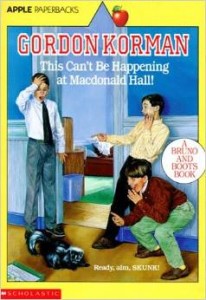 East of Toronto, just off Highway 48, you will find a beautiful tree-lined campus right across the road from the famous Miss Scrimmage’s Finishing School for Young Ladies. It is Macdonald Hall, where generations of boys have been educated and prepared for manhood. Named for Sir John A. Macdonald, the Hall, with its ivy-covered stone buildings and beautiful rolling lawns, is the most respected boarding school for boys in all of Canada.
East of Toronto, just off Highway 48, you will find a beautiful tree-lined campus right across the road from the famous Miss Scrimmage’s Finishing School for Young Ladies. It is Macdonald Hall, where generations of boys have been educated and prepared for manhood. Named for Sir John A. Macdonald, the Hall, with its ivy-covered stone buildings and beautiful rolling lawns, is the most respected boarding school for boys in all of Canada.